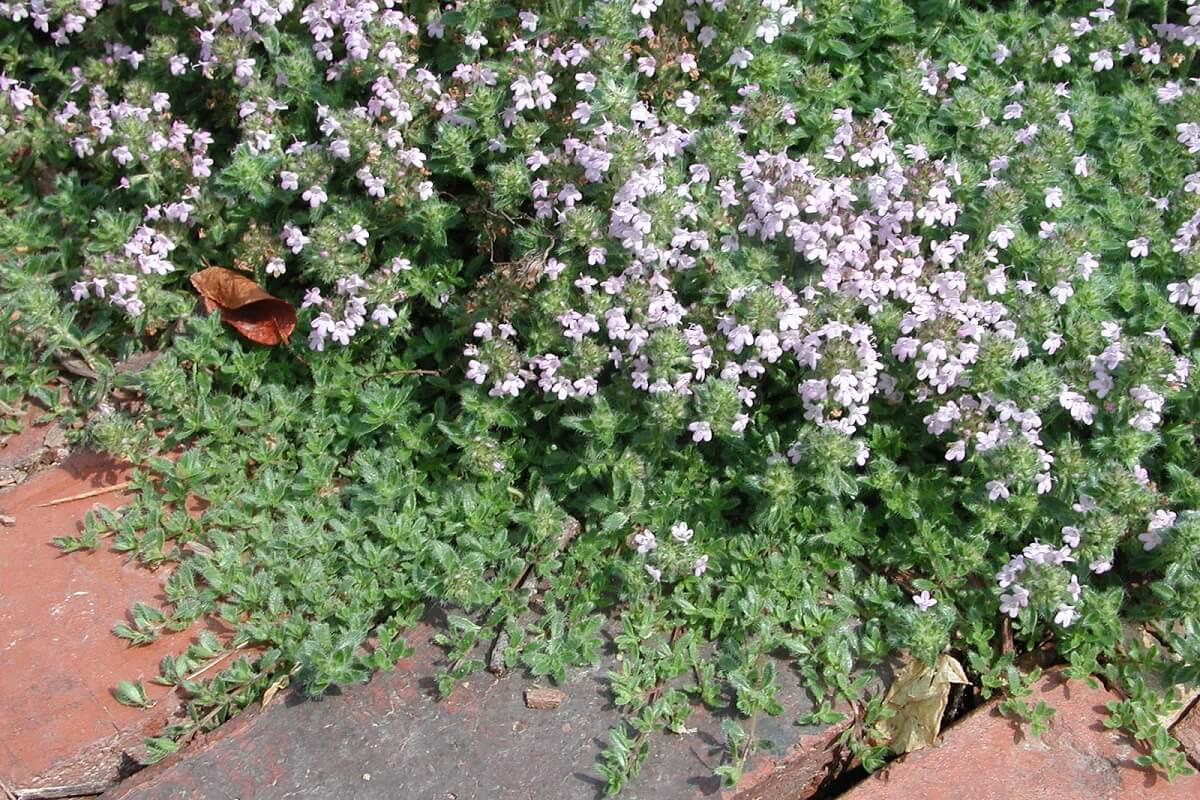
They originally grew wild in the more temperate areas of Europe and a few species have become naturalized in the American northwest to the point of becoming invasive. Most species of creeping thyme seem safe for anyone in Zones 5-8 but there are a few requiring warmer temperatures or that can handle slightly more cold. I’ve seen varying reports on where these plants do best. I did notice a site from England mentioned a number of species as being “noted for attracting wildlife” but it wasn’t clear if that meant bees and butterflies or something that would make a meal out of your thyme plants. They are considered deer tolerant but as we all know that seems to depend on what your resident critters might deem tasty as opposed to what the experts say. One source suggested a thin layer of gravel be placed around the plant to help protect the foliage from wet soil. (Actually, the leaves will all turn black and the plant will die a slow and lingering death if you over-water. All thyme tends to rot in moist or wet soil particularly during the winter months. They prefer dry to medium, well-drained soil. Growing Creeping ThymeĪll of the species of thyme currently being sold as creeping or elfin thyme require similar soil conditions. If you plan on harvesting leaves for drying, the best times are early and late summer right before the flowers bloom. Their scent, and one would therefore presume their flavor, varies with the seasons and the climate of where it is being grown. It is a “stepable” – meaning that it can be used in an area of the garden that receives moderate foot traffic.įrom everything I’ve read, the creeping thymes are edible but they vary greatly in their culinary usefulness. Traditionally, creeping thyme has been used as an evergreen ground-cover and often used in rock gardens and in between stepping stones.

There are several varieties of both as well as a number of other species being sold to Fairy Gardeners due to their small size and pretty little flowers.

The two species of thyme most often referred to as Elfin Thyme are Thymus serpyllum and Thymus praecox. Fairy Garden by Melissa of the Inspired RoomĪs already mentioned, creeping thyme has become a popular choice for fairy gardens like the one shown here from the inspired room.


 0 kommentar(er)
0 kommentar(er)
